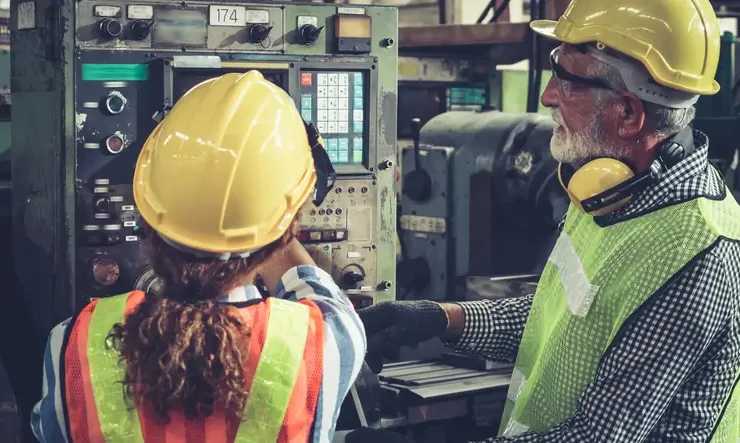How Many People Suffer Back Injuries in the Workplace?
One of the most significant problems that have been noticed at the workplace is back injuries. The Occupational Safety and Health Administration (OSHA) aims to take preventive actions to protect the health of employees by addressing the measure causes of back injuries. Every year, there are more than a million workers who have faced back problems and injuries that become the leading cause of employee illnesses.
According to the United States Bureau of Labor Statistics, back injuries account for a quarter of all worker’s compensation claims, which will cost the companies billions of dollars each year. Yet, the thing is back injuries in the workplace are a significant concern, affecting a substantial number of employees across various industries. These injuries can lead to pain, disability, and significant economic burdens on both workers and employers.
- 38% of work injuries are back-related
- 43% of injuries among manual workers are back related
- Nursing assistance have the highest percentage of back-injuries at 52.8%
Back Injuries in the Workplace Statistics
The number of people who suffer back injuries in the workplace can vary from year to year and across different countries. Back injuries are a common occupational health issue, particularly in jobs that involve heavy lifting, repetitive motions, or poor ergonomics. The exact number of back injuries can be influenced by various factors, including the type of industry, safety measures in place, and reporting practices.
Before delving into this comprehensive read, it is imperative to consider workplace back injuries statistics. This data shows how workplace back injuries affect the employees’ health as well as the organization’s productivity.
- In the United States, there were roughly 372,683 cases of musculoskeletal diseases that required days away from work in 2019. Back injuries accounted for a large portion of these cases. It’s crucial to remember that the figures can have altered since then.
- As per the Bureau of Labor Statistics (BLS) in the United States reported that musculoskeletal disorders, including back injuries, were among the leading causes of non-fatal workplace injuries and illnesses.
- According to the World Health Organization (WHO), 619 million individuals have been affected with low back pain across the world. It even predicted that almost 843 million people might be affected by the year 2050.
- The back is the most typical body part to experience work-related musculoskeletal illnesses that require time off. In 2016, 134,550 back-related musculoskeletal illnesses comprised 349,050 total cases. Excessive effort or repeated movements can cause injuries or illnesses known as musculoskeletal disorders. They include soft-tissue disorders such as carpal tunnel syndrome and sprains, strains, rips, and hernias.
Back Injuries & Economic Impact
Workplace back injuries not only affect the health and well-being of employees but also have a significant economic impact. According to several researchers, it has been found that the total cost of back injuries in the United States, including medical expenses and lost productivity, exceeded $100 billion annually. This staggering cost underscores the importance of prevention and early intervention to reduce the economic burden on businesses and the healthcare system.
Back Injuries & Gender Disparities
While back injuries can affect both men and women, back injuries in the workplace statistics show that there are some gender disparities in the workplace. According to the Illinois Chiropractic Society, men tend to have a higher risk of suffering back injuries on the job. However, NIOSH reported that among all non-fatal occupational injuries involving days away from work, 59% were experienced by men and 41% by women.
Back Injuries & Age
Age plays a significant role in the likelihood of suffering back injuries in the workplace. The National Council on Compensation Insurance (NCCI) reports that older workers are more susceptible to these injuries. In fact, workers aged 45 and above are at a higher risk of experiencing back injuries. This can be attributed to age-related physical changes, decreased muscle strength, and reduced flexibility, making older employees more vulnerable to workplace back injuries.
Occupations Prone to Back Injuries
There are certain occupations that are more prone to back injuries due to the physical demands of the job. Workers in healthcare, construction, manufacturing, and transportation industries face a higher risk of sustaining back injuries. According to the Centers for Disease Control and Prevention (CDC), in 2019, healthcare support workers experienced the highest rate of non-fatal occupational injuries resulting in days away from work, and a significant portion of these injuries were related to back strains and sprains.
5 Significance of Addressing Workplace Back Injuries
Here’s why workplaces need to seriously address the issues related to back injuries.
1. Human and Economic Costs
Workplace back injuries not only cause significant pain and suffering for individuals but also result in substantial economic costs. These injuries lead to lost workdays, reduced productivity, and increased workers’ compensation claims, affecting both employees and employers.
2. Long-Term Consequences
Back injuries can have long-lasting consequences, often leading to chronic pain and disabilities. This affects the quality of life for the injured workers and their families, in addition to increasing healthcare and insurance expenses.
3. Safety and Well-Being
Prioritizing workplace safety is not only a legal obligation but also a moral one. Employers have a responsibility to provide a safe working environment for their employees. Reducing the occurrence of back injuries enhances the overall well-being of the workforce.
4. OSHA Safety Courses
Employers and employees should consider enrolling in OSHA training courses that specifically focus on preventing back injuries. These courses provide valuable insights and practical guidance on ergonomics, safe lifting techniques, and injury prevention strategies.
5. Reporting and Accountability
Encourage employees to report any unsafe conditions or incidents promptly. Establish a culture of accountability that promotes safety and encourages employees to take an active role in preventing back injuries.
Conclusion
Workplace back injuries are a significant concern, both in terms of the number of individuals affected and the broader economic and societal impact. Addressing this issue is not just a matter of compliance with regulations; it’s a moral responsibility to ensure the well-being of the workforce.
However, enrolling in safety courses such as OSHA 10-hour construction and OSHA 30-hour construction conducting safety assessments, educating employees, and fostering a culture of safety are crucial steps in reducing the prevalence of back injuries in the workplace. By taking action, we can make our workplaces safer and protect the health and livelihoods of workers across various industries. Let’s prioritize workplace safety and join hands in creating a safer, healthier work environment for all.
BLS 2016, BLS 2019, BLS Facesheet, WHO, FMP Global, CDC, IASP





